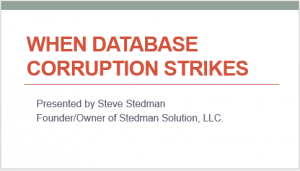Patrick Flynn Interview – Database Corruption Challenge
After 10 weeks (or almost weekly) of corrupt databases, missing data and a challenging competition the Database Corruption Challenge finally comes to an end. As part of the last week of the challenge I created a short blog interview for the participants. This interview is Patrick Flynn.
Patrick placed in third with a 3 way tie for third overall in the the Database Corruption Challenge scoring 21 points.
Here are the overall statistics for Patrick in the Database Corruption Challenge
- Overall Rank: #3 (3 way tie)
- Points Scored: 21
- Number of Challenges First to Solve (winning): 1
- Number of Challenges Solved: 9
- Country: Australia
Read More »Patrick Flynn Interview – Database Corruption Challenge
